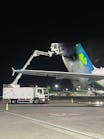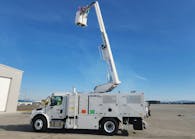Ground Handling’s Role in Optimizing the Supply Chain
Whether as a manufacturer or a consumer, most of us have felt the effects of supply chain disruptions. Throughout the last two-plus years, air cargo has been highlighted as an avenue to relieve supply chain bottlenecks. And recently, government and business officials called attention to the importance of a specific element of air cargo – ground handling.
At the end of November, government officials from the federal, state and local levels – including U.S. Transportation Secretary Pete Buttigieg and Federal Aviation Administration (FAA) deputy administrator A. Bradley Mims – celebrated the completion of a deicing pad project at Memphis International Airport (MEM), where FedEx operates its largest air cargo sorting facility.
The timing of this project’s completion was notable as the holiday shopping season – ripe with online orders – was well under way, and the International Air Transport Association (IATA) reported cargo demand in October had increased 3.5 percent over September’s demand.
Throughout the dedication ceremony, leaders emphasized the importance of cargo aircraft departing on time to facilitate supply chain demands.
“We want to thank the U.S. Department of Transportation, Federal Aviation Administration and Memphis International Airport for their support of this new consolidated deicing facility - an example of how to deploy technology to improve operational efficiency,” Richard W. Smith, president and CEO at FedEx Express, said during the dedication. “The timing could not be better as FedEx enters the busy holiday season. This facility is a shining example of how we can help ensure our team members are safely operating throughout the winter season as we deliver outstanding service for our customers.”
According to information supplied by the FAA, which contributed $174 million to the project, the 3.3 million square foot deicing pads at MEM are capable of deicing up to 12 wide-body cargo aircraft simultaneously.
To provide more environmentally friending operation, the deicing pads use a segregated drainage system and large-volume containers to collect deicing fluid after it’s sprayed. Additionally, the fluid’s release is metered into the sanitary sewer system, where it breaks down and helps sanitize city wastewater, according to the FAA’s release.
The deicing pads feature message boards that eliminate the need for audio communication with pilots. The deicing facility also includes taxiway lead-in lights to eliminate the need for follow-me vehicles or marshallers as well as infrared cameras to help position airplanes in the deicing bays.
“The FAA is in the safety business. But we are also in the innovation business because constant innovation both compels and enables new safety approaches. And we have to pursue our mission with an inventive spirit and find new sustainable ways to accomplish our goals,” said Mims. “These new deicing pads do exactly that.”
Project advocates emphasized that deicing planes at a central pad instead of the gate allows an aircraft to depart from MEM sooner, reducing the possibility that aircraft would need to be deiced again.
“Memphis International Airport is the biggest cargo airport in the country, and this innovative aircraft deicing facility is one of the many ways we’re modernizing America’s supply chains,” said Buttigieg.
Whether discussing winter ops or other ground handling tasks, gaining efficiencies is crucial. More efficient handling frees up ground personnel to address other critical matters and results in satisfied airline customers as they deliver cargo or transport passengers on time.
Do you have an example of an airport project that improved ground handling efficiency? I’d like to hear about it. Reach out to josh@AviationPros.com. I welcome your input on the topic.








